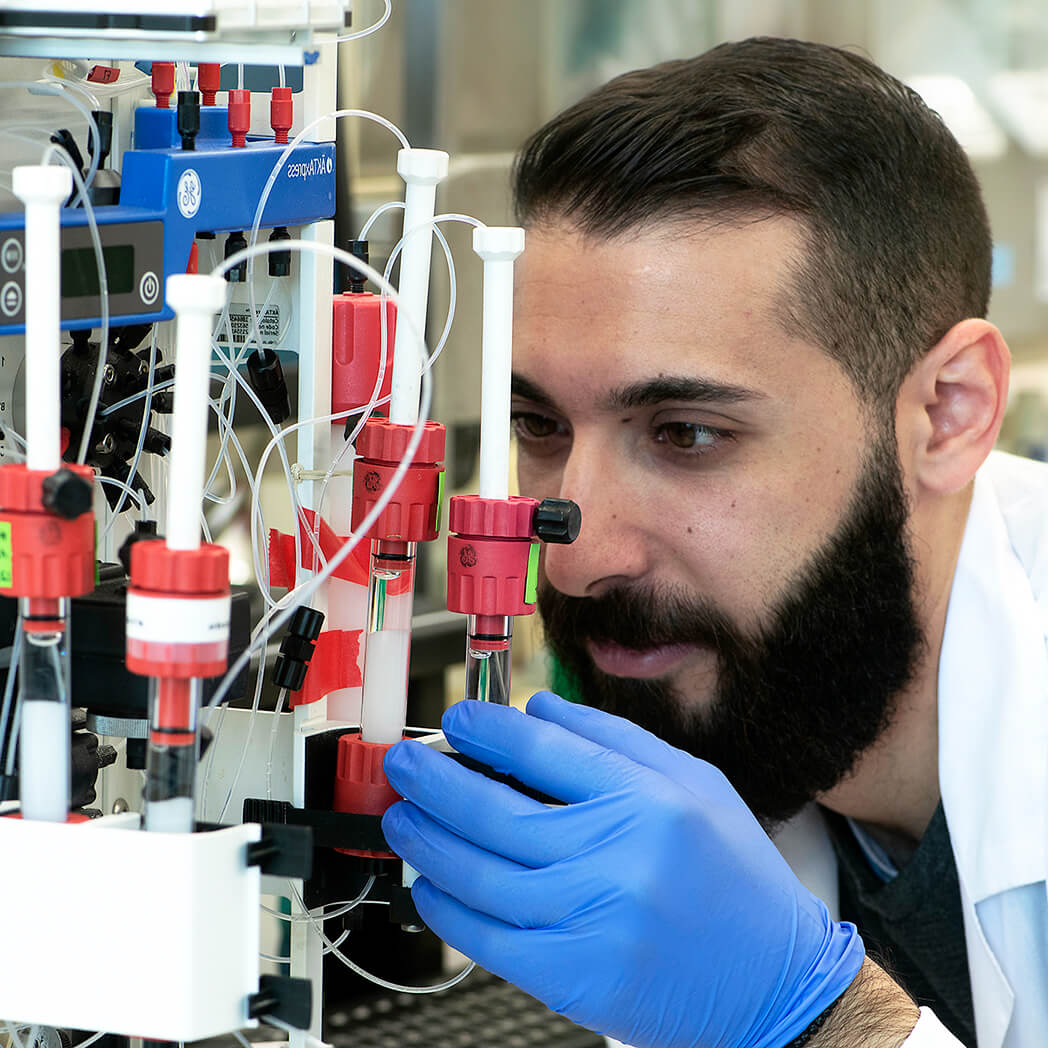Overview
Cat #:
Size:
10 mg
Lot:
E165SM0110
Alternative Name GTPL1390, SCHEMBL6952709
Lyophilized Powder yes
Source Synthetic
MW: 308.39
Purity: >98%.
Effective concentration 10 nM – 10 µM.
Chemical name 1-ethyl-2-methyl-6-oxo-4-(1,2,4,5-tetrahydro-3-benzazepin-3-yl)pyrimidine-5-carbonitrile.
Molecular formula C18H20N4O.
PubChem CID 9904703
Activity EM-TBPC is a potent and selective antagonist that binds only to rat mGluR1 receptor and displays an IC50 of 128 nM for the rat receptor transfected in HEK 293 cells. It has a low affinity for human mGluR11.
References-Activity
- Malherbe, P. et al. (2003) J. Biol. Chem. 278, 8340.
Shipping and storage Shipped at room temperature. Product as supplied can be stored intact at room temperature for several weeks. For longer periods, it should be stored at -20°C.
Solubility Up to 100 mM in DMSO. Centrifuge all product preparations before use (10000 x g 5 min).
Storage of solutions -20°C.
Our bioassay
 Alomone Labs EM-TBPC inhibits mGluR1 mediated Ca2+ mobilization in U2OS cells.Dose response of normalized inhibition of human mGluR1 receptors mediated, L-Glutamate evoked Ca2+ mobilization by EM-TBPC (#E-165). IC50 was determined at 370 nM. hmGluR1-expressing cells were loaded with Ca2+-sensitive dye, incubated with a range of concentrations of EM-TBPC, and stimulated by 15 µM L-Glutamate (EC80). Changes in intracellular Ca2+ following stimulation were detected as changes in maximum relative fluorescence (RLU) using FLIPRTETRA™.
Alomone Labs EM-TBPC inhibits mGluR1 mediated Ca2+ mobilization in U2OS cells.Dose response of normalized inhibition of human mGluR1 receptors mediated, L-Glutamate evoked Ca2+ mobilization by EM-TBPC (#E-165). IC50 was determined at 370 nM. hmGluR1-expressing cells were loaded with Ca2+-sensitive dye, incubated with a range of concentrations of EM-TBPC, and stimulated by 15 µM L-Glutamate (EC80). Changes in intracellular Ca2+ following stimulation were detected as changes in maximum relative fluorescence (RLU) using FLIPRTETRA™.
Target mGluR1 receptor
Lyophilized Powder
For research purposes only, not for human use
Last Update: 30/03/2021
Specifications
Citations
Citations

